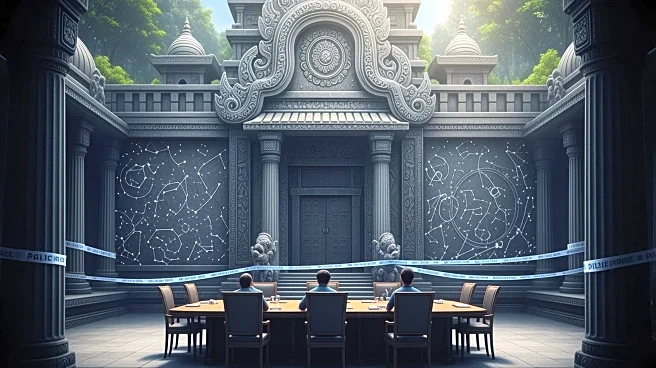What's Happening?
Researchers have uncovered a 3,000-year-old Maya site in southeastern Mexico, known as Aguada Fénix, which is believed to represent a cosmogram—a map of the universe as perceived by the ancient Maya. This
site, dating back to 1050 B.C., is the oldest and largest monumental architecture in the Maya area, surpassing many ancient Mesoamerican cities in size. The site features a complex system of structures, including canals, causeways, and a dam, forming cross shapes that align with the movement of the sun. The site was likely a communal construction project, involving over 1,000 people, and was used for collective rituals and feasting. Despite its grandeur, Aguada Fénix shows no signs of social hierarchy, unlike later Maya sites.
Why It's Important?
The discovery of Aguada Fénix provides significant insights into the early Maya civilization, particularly their understanding of the cosmos and social organization. The site's construction without evidence of coercion suggests a society that valued collective action over hierarchical control, challenging previous assumptions about early Mesoamerican societies. This finding could reshape historical narratives about the development of social structures in ancient civilizations. Additionally, the site's alignment with solar movements highlights the Maya's advanced astronomical knowledge, which played a crucial role in their cultural and religious practices.
What's Next?
Further research and excavation at Aguada Fénix are expected to continue, with archaeologists aiming to uncover more about the site's purpose and the people who built it. Scholars are likely to debate the interpretation of the site as a cosmogram, with some calling for clearer definitions and methodologies. The findings may prompt a reevaluation of other ancient sites in Mesoamerica, potentially leading to new discoveries about the region's early civilizations.
Beyond the Headlines
The Aguada Fénix site underscores the importance of collective action in early societies, offering a counter-narrative to the idea that monumental architecture was solely the result of hierarchical leadership. This perspective aligns with emerging interpretations that emphasize communal efforts in ancient Mesoamerican cultures. The site's unfinished state and the absence of written records from the period pose challenges for researchers, highlighting the need for innovative archaeological methods to uncover the full story of the Maya's early history.












